North East Victoria, Southern Slopes NSW, South West Victoria (Upper) – Environmental Issues
There are a number of threatening issues that occur in the region that affect its soils and natural resources. This are discussed below.
Soil issues
Soil issues include salinity, acidification, wind and water erosion, water-logging and soil structural decline. See Soils of North East Victoria, Southern Slopes NSW and South West Victoria (Upper) for information on soil types.
Salinity
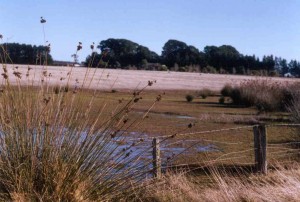
The clearing of deep rooted native vegetation and replacing it with shallow rooted pasture species has changed the water balance resulting in greater amounts of water escaping below the root zone. Low levels of naturally occurring salts in the landscape are mobilised by this water and redistributed closer to the soil surface and/or into waterways by rising groundwater. Dryland salinity occurs where this salt laden water emerges from the soil or rises to within the root zone affecting plant growth. Dryland salinity occurs on a range of landscapes from the flats of north central Victoria, flats and terraces on the Riverine plains to break of slope and valley floors in hilly terrain of north-east Victoria and southern NSW.
Soluble salts can contain high levels of sodium and chloride which is toxic to plant species such as sub clover and lucerne. Waterlogging is common around discharge sites which reduces plant growth. Other impacts include water quality decline due to increased salt loading in waterways and death of existing native vegetation.
Early signs of salinity such as reduced vigour and stunting of improved pastures is hard to distinguish and may go unnoticed or misdiagnosed. Salt sensitive species such as clover begin to thin out and are replaced with salt tolerant species such as sea barley grass and spiny rush.
Management decisions to combat salinity include a combination of deep rooted perennial pastures with high density tree planting in recharge areas. The use of salt tolerant pastures such as tall wheat grass to reclaim discharge areas has been used to gain some minor production from the site and provide groundcover to minimise erosion A page on Management of saline land in SouthWest Victoria has been developed and is currently being adapted to this region. Further information can be found on the Agriculture Victoria and DPI NSW websites.
Soil Acidification
Many of the soils in this region are strongly acidic (pH 4.3 – 4.8 CaCl2). While most of the region’s soils are naturally acidic, a significant amount of the acidification has been the result of agricultural activities, particularly in cropping areas. Pasture and crop production is reduced as the aluminum and manganese levels associated with acid soils become toxic and retard root growth. The availability of essential plant nutrients such as phosphorus and molybdenum may be reduced by soil acidity which will also impact pasture growth. These soils may require the application of lime to establish acid sensitive pastures such as phalaris and lucerne and to maintain production (see soil pH map of Victoria). However, while the economic benefit of liming in cropping systems is quite clear, it is less so for grazing systems, particularly in steep country where native pastures play an important role in the grazing system.
The impact of acidification is not only the loss of production but it can lead to increased runoff, soil erosion, reduced water uptake, salinity and increase nitrate leaching.
Further information on monitoring and managing soil pH is provided on the Agriculture Victoria and DPI NSW websites.
Waterlogging
[expand title=” ” swaptitle=” ” tag=”h4″ elwraptag=”div” elwrapclass=”expend-collapse-wrapper”]
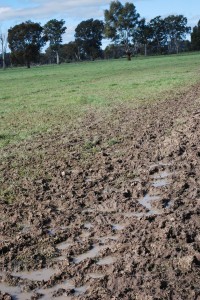
Waterlogging occurs when water enters the soil and cannot effectively drain away. It is often associated with impermeable clay sub soil in low lying areas but may occur in a range of soil types where soil compaction due to machinery or livestock has created an impermeable barrier.
Waterlogged soils remain colder for longer which slows pasture growth in the spring months. The anaerobic environment created by waterlogging can cause nitrogen loss though de-nitrification and leaching of potassium, sulphur and nitrogen through the soil profile as well as a decline in favourable biological activity which assists in the restoration of soil structure decline. Grazing waterlogged soils results in pugging which can destroy significant areas of a pasture and lead to soil structural decline and reduced plant growth. See Managing wet soils in North East Victoria, Southern Slopes NSW and South West Victoria (Upper) for further information.
Wind and water erosion
Significant damage to soils has occurred when groundcover has been removed and is no longer available to protect soils from wind and water erosion. This occurs mainly in dry times but can occur in pastures which are overgrazed at any time. The highest erosion risk is with steep, overgrazed paddocks in late summer when rainfall events are less frequent but often large. Paddocks with a high proportion of annual species, which die out in summer leaving high levels of bare ground, are more susceptible than perennial pastures. Pastures which are continuously grazed are most susceptible unless practices are put in place to destock when groundcover falls below critical levels.
Soil erosion by wind and water can cause significant production losses through the loss of top soil and nutrients as well as creating gullies which make stock and vehicle movement difficult or impossible. Soil and nutrients may also end up in dams and waterways negatively affecting water quality for both agriculture and the environment. While wind erosion is more commonly associated with cropping systems on the plains it can still be an issue in higher country during droughts and also needs to be managed alongside water erosion risks.
High country in North East Victoria and Southern NSW is particularly susceptible to erosion during major flooding events. Rainfall entering waterways from the Alpine regions can very quickly result in rivers and streams consuming agricultural land, often damaging pastures and leaving behind significant erosion events. Further information on managing ground cover can be found in the Nuts and Bolts of Grazing Strategies EverGraze Exchange. EverGraze is currently developing a page on Managing ground cover and making perennials persist in this region.
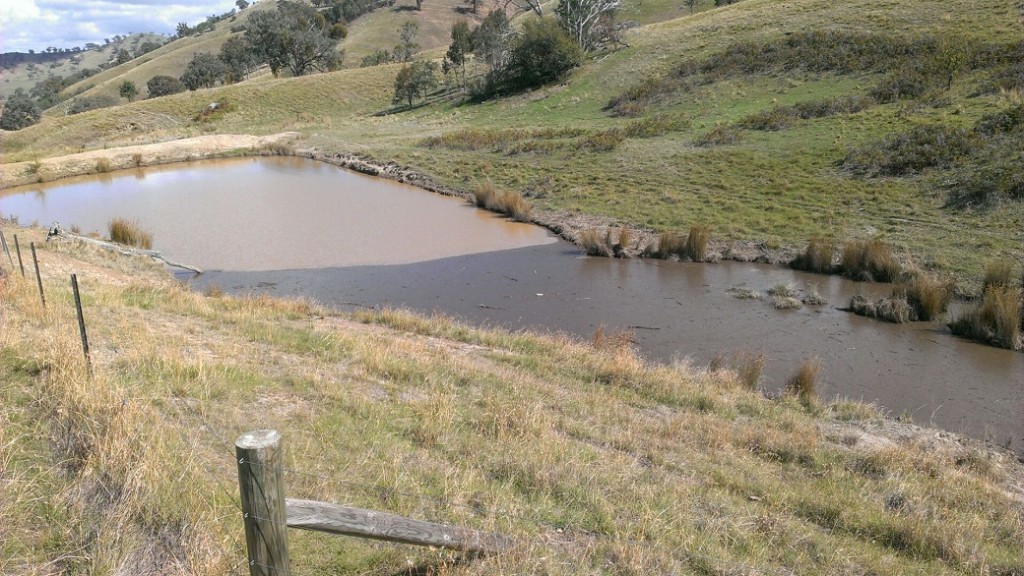 |
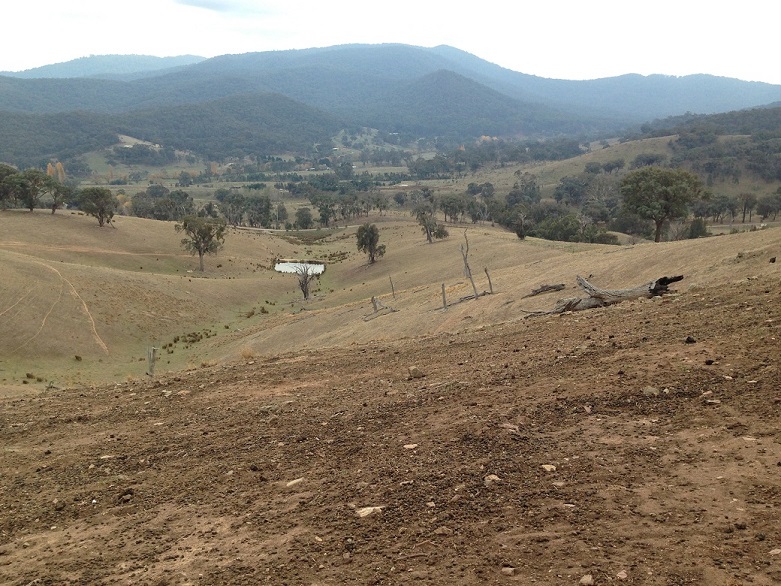 |
| High soil loss and water contamination after heavy rainfall events is common in hill country of North East Victoria, Southern Slopes NSW and South West Victoria (Upper) | |
Soil structural decline
Soil structure decline impedes the movement of water, air and nutrients through the soil profile. A decline in soil structure can lead to waterlogging and surface runoff which can result in erosion and an increase of sediments entering the waterway. Agricultural activities such as cultivation, machinery and livestock compaction and overgrazing can lead to structural decline. All soil types can experience soil structural decline but some soils are more prone to it, particularly sodic soils which have a high exchangeable sodium percentage (ESP > 6%). In sodic soils, clay particles disperse when the soil is wet, blocking pores and reducing air and water movement. This causes a crust to form on the soil surface when dry and can impact seed germination and increase surface runoff. Pasture establishment in these soils may require gypsum to reduce the crusting of the soil surface to allow germination of pasture seedlings. The Sodosol soils of north-east Victoria have a highly sodic subsoil below the clay loam topsoil. These soils are very prone to waterlogging and cultivation may be problematic if the sodic soil is brought to the surface.
Soils low in organic matter are susceptible to slaking. When rainfall hits dry soil it can cause the aggregates to break down into smaller particles that block pore spaces and can cause surface sealing. Cultivating the soil reduces organic matter levels. In a grazing system, organic matter levels on your soil test should ideally be greater than 2% to prevent slaking. In many instances it will be difficult to greatly improve organic matter levels as it is usually limited by rainfall and soil fertility. A well-managed perennial pasture that is appropriately fertilised and grazed to maximise pasture production will generally lift soil organic matter closest to its potential limit in agricultural systems. It is important to maintain groundcover even in prolonged dry periods as the slaking can occur on dry bare soil, especially if heavy rain coincides with the autumn break.
Loss of biodiversity
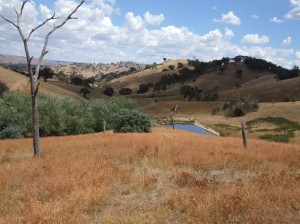
Biodiversity has been lost from the landscape with the clearing of native vegetation for agriculture. In the less arable hills of North East Victoria and South East NSW, significant areas of native grasses remain and are highly valued by landholders. Native grass decline is seen on the areas where introduced pasture species can be sown. In arable areas often as little as 1% of native pasture remains and is generally confined to roadsides and remnant areas. The condition of the native pasture is also highly variable with many species unable to cope with grazing resulting in a less diverse native base. The loss of tree and shrub layers from these systems has also reduced habitat for a wide range of other flora and fauna. While these areas have been modified to support an agricultural enterprise, improved management of native pastures can improve both their productivity and sustainability. Establishment of tree and shrub corridors may also address some of the effects of habitat loss while assisting with salinity control.
Invasive weeds probably represent the greatest threat to biodiversity and agricultural production in high rainfall areas. In the high rainfall areas blackberry has invaded many waterways and steep terrain which can have an impact on the native grasses and production in these areas. The invasion of Chilean Needle Grass, African Lovegrass and Serrated Tussock into productive areas has been a concern in recent times. Control of these weeds is often difficult and expensive. Early detection and the implementation of an integrated weed management strategy is the best form of defence. Like a number of feral animal control strategies, area wide control strategies may be the best approach to controlling these weeds. More information on noxious weed control can be obtained from your local council or agriculture department and Weeds Australia.
See Management of native pastures and Identifying native grasses for further information.
Water quality of streams
A number of factors affect water quality in streams and rivers of the region. Increased turbidity from suspended sediments as a result of soil erosion and dissolved salts impact on aquatic life and the suitability of water for stock and domestic purposes. In general, lower water quality is experienced in catchments where a high percentage of the land has been developed for agriculture. However, soil type, steepness and the type of agricultural practices adopted can have a significant influence. In water catchments used for human consumption other concerns are algae, microorganisms and bacteria, as well as the nutrients that promote their growth.
Waterways in the upper catchments of North East Victoria and Southern NSW are generally in moderate to good condition and the large proportion of public land may contribute to this result. The water quality of streams in the Goulburn Broken, North Central and Upper South West are classed as moderate to poor which may reflect on the removal of vegetation from the riparian zone.
At a paddock and farm scale many of these risks can be minimise by adopting good grazing practices and by establishing deep rooted perennial pastures and trees. Fencing off waterways from livestock and restoring riparian vegetation assists in improving the quality of the waterway by significantly reducing stream bank erosion and creating a buffer zone to capture overland water flow that may carry sediment, nutrients and pathogens.
Further Information
- Surface soil pH map
- Manage recharge and salinity in south-west Victoria
- Agriculture Victoria Soil acidity monitoring tools
- NSW DPI Soils resources
- Agriculture Victoria soil erosion information
- Manage wet soils north-east Victoria, southern slopes NSW and south-west Victoria Upper
- Identifying native grasses
- Management of native pastures in Victoria
- Soil organic matter
- Victorian Resources Online soil pH map
- Victorian Resources Online – Sodic soils

